Author: Cade Jobe
Brewers are commonly encouraged to boil wort vigorously for an hour or longer with one of the more important reasons being to drive off dimethyl sulfide (DMS), an undesirable off-flavor commonly described as cooked corn or tomato paste. DMS is formed when its precursor, S-methylmethionine (SMM), decomposes in the warmer environments of the mash and the boil.
Once SMM has converted to DMS, it volatilizes and gets carried away in the steam, hence the recommendation to boil in an open kettle that allows the DMS laden steam to escape. By boiling with a lid in place, the steam will condense on the surfaces of the kettle and drip back into the wort, resulting in a higher concentration of DMS and thus increasing the risk of off-flavors.
I recently switched from a powerful propane brewing setup to a 120v electric system that, while capable of achieving an adequate boil, is quite a bit less vigorous than what I was used to. I’d never considered boiling with the lid on my kettle before making this switch, but lately I’ve been wondering what kind of impact it might have, especially when brewing beers where pilsner malt makes up the bulk of the grain bill. With one past xBmt showing tasters couldn’t reliably distinguish a Festbier boiled with the lid on from one boiled with the lid off, I decided to test it out again on one of the most notably delicate lager styles.
| PURPOSE |
To evaluate the differences between a lager-style beer boiled with the lid on versus with the lid off.
| METHODS |
For this xBmt, I went with a tried-and-true Munich Helles recipe with the goal of maximizing any impact of the variable.
To The Moon
Recipe Details
| Batch Size | Boil Time | IBU | SRM | Est. OG | Est. FG | ABV |
|---|---|---|---|---|---|---|
| 5.5 gal | 60 min | 22.9 | 3.3 SRM | 1.049 | 1.008 | 5.38 % |
| Actuals | 1.049 | 1.008 | 5.38 % | |||
Fermentables
| Name | Amount | % |
|---|---|---|
| Pelton: Pilsner-style Barley Malt | 10.625 lbs | 100 |
Hops
| Name | Amount | Time | Use | Form | Alpha % |
|---|---|---|---|---|---|
| Tettnang | 50 g | 60 min | Boil | Pellet | 3.7 |
Yeast
| Name | Lab | Attenuation | Temperature |
|---|---|---|---|
| Harvest (L17) | Imperial Yeast | 74% | 32°F - 32°F |
Notes
| Water Profile: Ca 61 | Mg 0 | Na 8 | SO4 75 | Cl 55 |
Download
| Download this recipe's BeerXML file |
I started my brew day by collecting the full volume of water for each batch, adjusting both to the same mineral profile before setting the electric controllers to heat them up.
I then weighed out and milled the grains for each batch.
With the water properly heated, I added the grains, turned the pumps on to recirculate, and set the controllers to maintain my intended mash temperature of 152°F/67°C.
While the mashes were resting, I weighed out the kettle hop additions.
Following each 60 minute mash rest, I removed the grains then heated each batch to boil, placing the lid on one kettle while the other kettle was left uncovered.
When the boils were complete, I chilled the worts and noticed an interesting difference in the way each kettle appeared.
After racking identical volumes of wort from each batch to separate Brew Buckets, I took hydrometer measurements showing a very slight difference in OG.
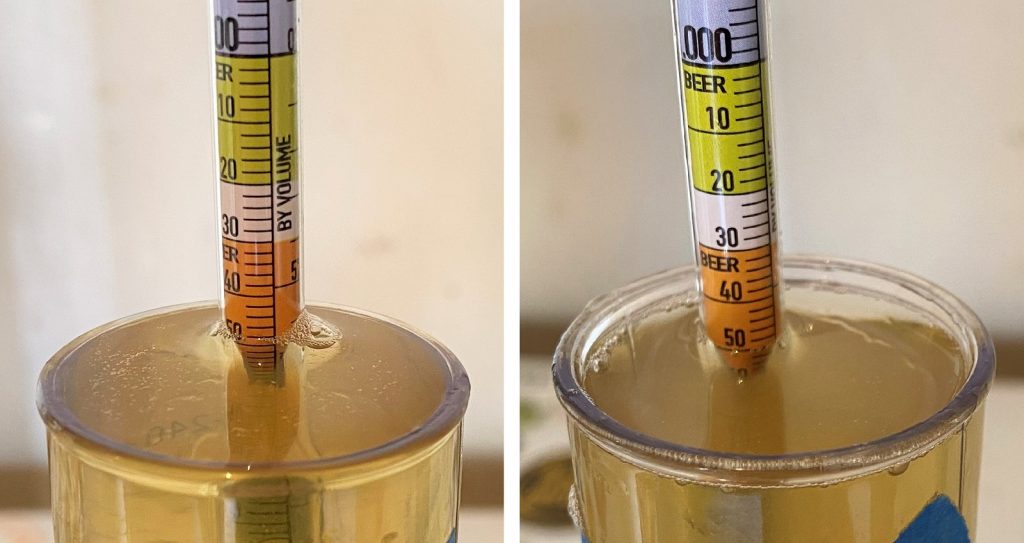
The worts were left in my chamber for a few hours to finish chilling to my target fermentation temperature of 53°F/12°C, at which point I pitched a pouch of Imperial Yeast L17 Harvest directly into each batch.
After 5 days of fermentation, I raised the temperature to 65°F/18°C and let the beers sit an additional 10 days before taking hydrometer measurements showing each batch was at the same FG.
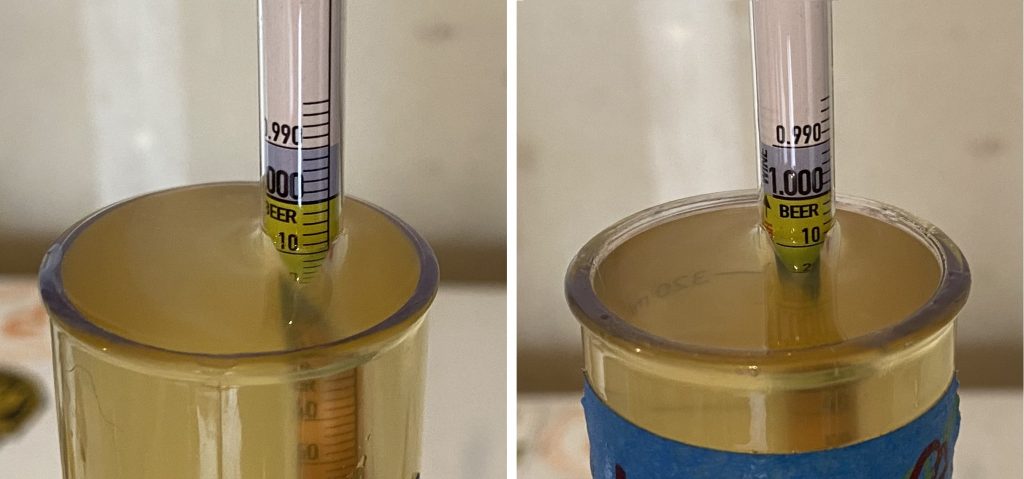
At this point, I cold crashed the beers to 32°F/0°C overnight before proceeding with packaging. The filled kegs were placed on gas in my keezer and allowed to condition for a couple weeks before they were ready for evaluation.
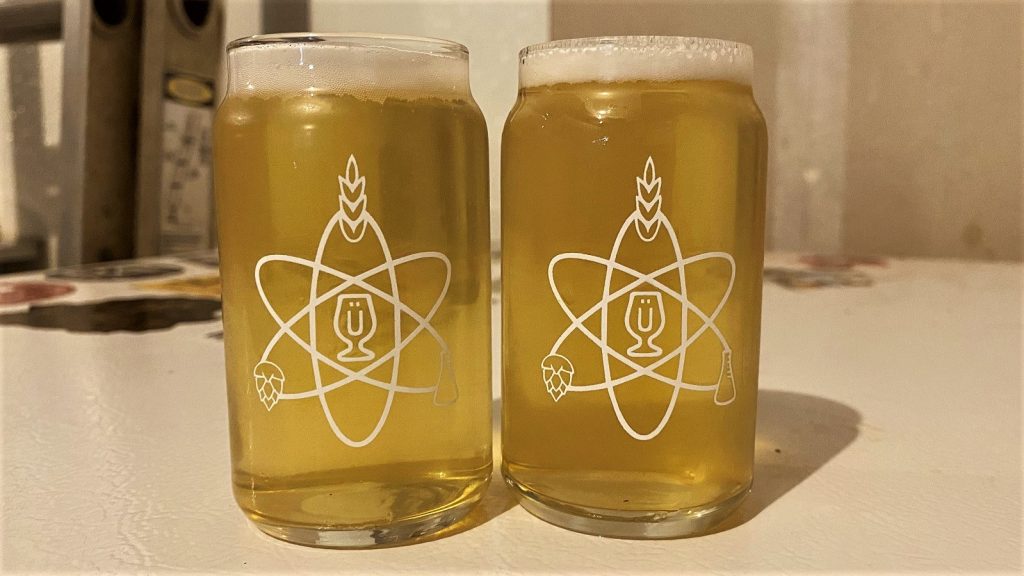
| RESULTS |
Due to social distancing practices as a result of the COVID-19 pandemic, data for this xBmt was unable to be collected in our typical manner. As such, temporary adaptations were made involving the author completing multiple semi-blind triangle tests in as unbiased a way as possible.
Utilizing 4 opaque cups of the same color where 2 were inconspicuously marked, one set was filled with the beer boiled with the lid on while the other set was filled with the beer boiled in an open kettle. For each triangle test, 3 of the 4 cups were indiscriminately selected, thus randomizing which beer was the unique sample for each trial. Following each attempt, I noted whether I was correct in identifying the unique sample. Out of the 10 semi-blind triangle tests I completed, I needed to identify the unique sample at least 7 times (p<0.05) in order to reach statistical significance. In the end, I correctly identified the unique sample just 5 times (p=0.21), indicating my inability to reliably distinguish a Munich Helles that was boiled with the lid on from one that was boiled with the lid off.
Undoubtedly biased by expectation based on the “truth” I’d learned since I started brewing, I was convinced I detected something different in the beer boiled with the lid on, and I told myself it was likely DMS. However, as my triangle test results show, these beers were perceptibly identical once I was unaware of which one I was drinking. Both were crushable with just enough bitterness to balance the characterful pilsner malt.
| DISCUSSION |
DMS is one of the commonly discussed off-flavors in beer, with astute evaluators quick to point out its presence in beers they perceive as having a cooked corn character. In competition scenarios, some judges who claim to identify this undesirable off-flavor offer advice as to how to avoid it, which often includes making sure to boil the wort in an uncovered kettle. My inability to reliably distinguish a Munich Helles that was boiled with the lid on from one boiled with the lid off suggests any differences in DMS were minimal enough as to be imperceptible to me.
One potential explanation for these findings is that Mecca Grade Estate’s Pelton pilsner-style malt is kilned in such a manner as to reduce DMS, though seeing as it is 1.8 °L, this seems unlikely. Similar to a prior xBmt on the same variable, the batch boiled with the lid on ended with a similar wort volume and OG as the batch boiled with the lid off, which is odd since one would expect the condensate formed in the covered kettle to fall back into the wort. Perhaps the looseness of the lid allows the same amount of steam to escape as boiling in an open kettle.
I’ve had fairly extensive sensory training and judging experiences, which not only made me excited to do this xBmt, but convinced me I’d be able to detect DMS in the beer boiled with a lid on, especially since it was a Munich Helles. The fact this wasn’t the case certainly has me questioning whether it was a function of my palate or if boiling with a lid on the kettle is as important as I’ve been led to believe. Regardless, I’ll continue boiling with the lid off, but only because covering the kettle increases the chances of a messy boil-over. We’ve made a number of attempts over the years to produce a beer with perceptible levels of DMS, and while it’s been more difficult than expected, I look forward to exploring this off-flavor more in the future.
If you have any thoughts about this xBmt, please do not hesitate to share in the comments section below!
Support Brülosophy In Style!
All designs are available in various colors and sizes on Amazon!
Follow Brülosophy on:
FACEBOOK | TWITTER | INSTAGRAM
If you enjoy this stuff and feel compelled to support Brulosophy.com, please check out the Support page for details on how you can very easily do so. Thanks!


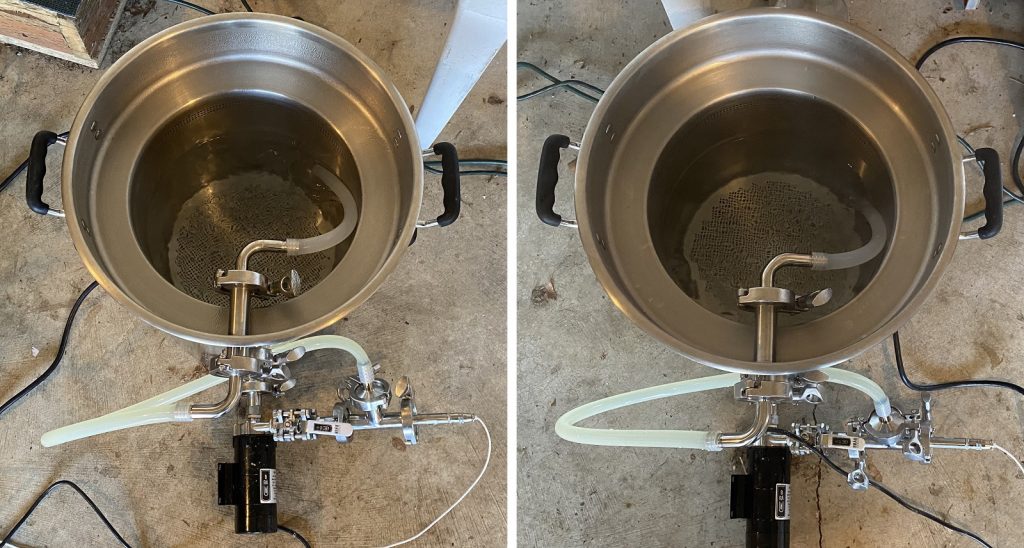
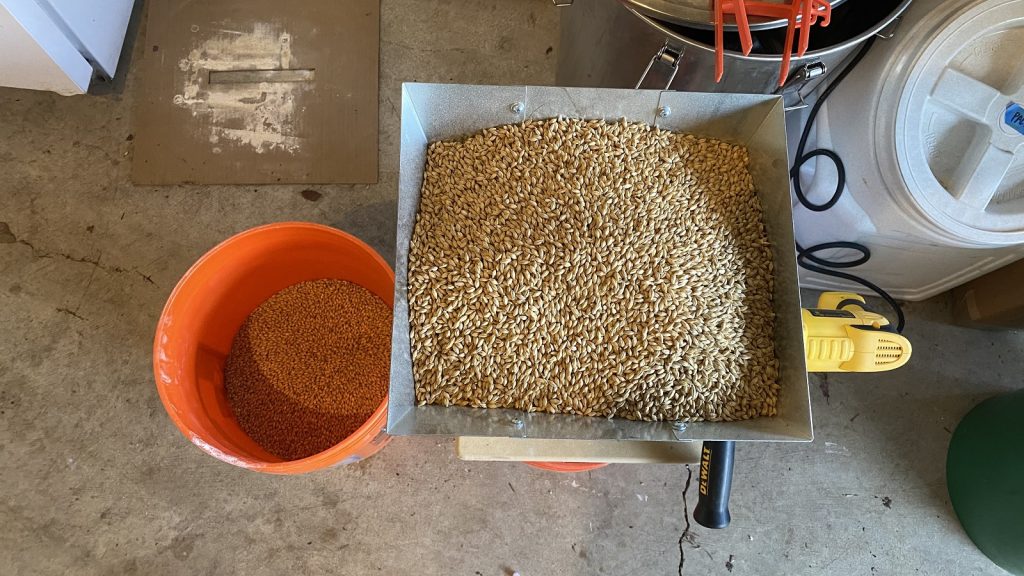
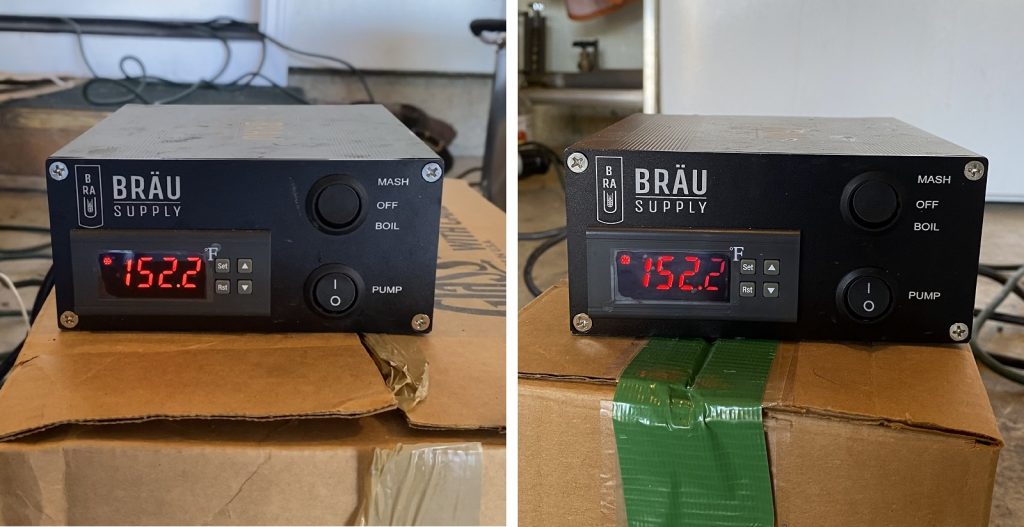
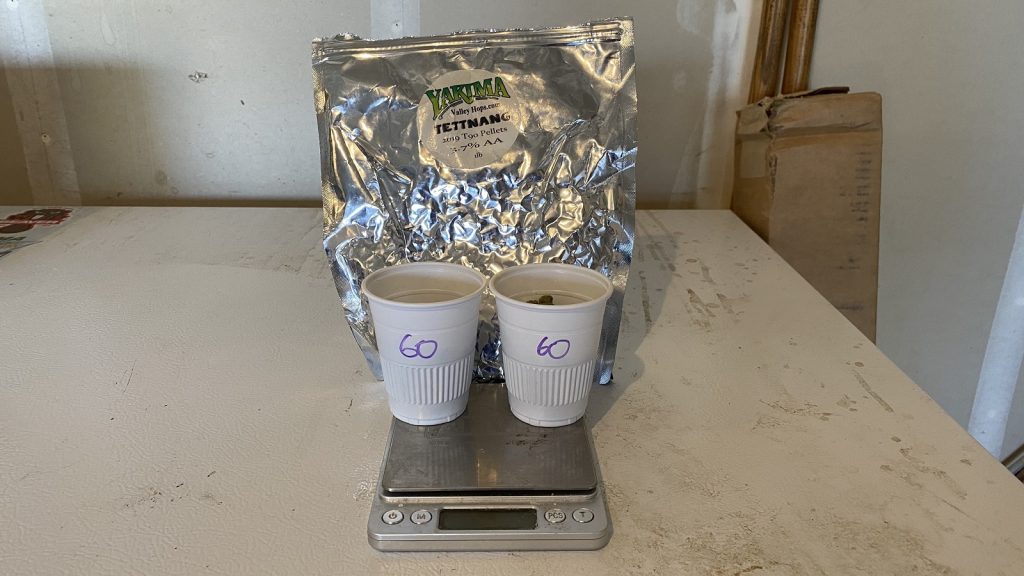
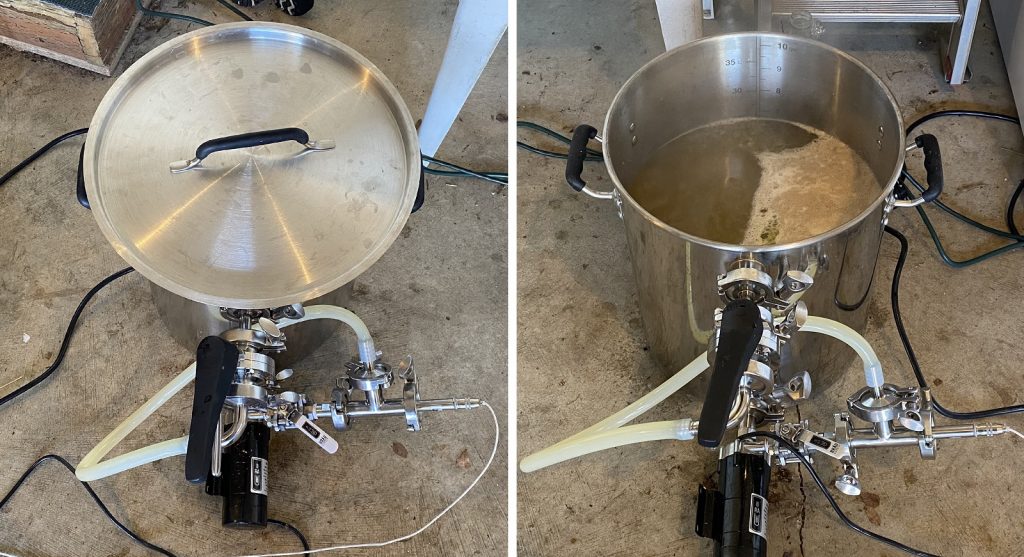
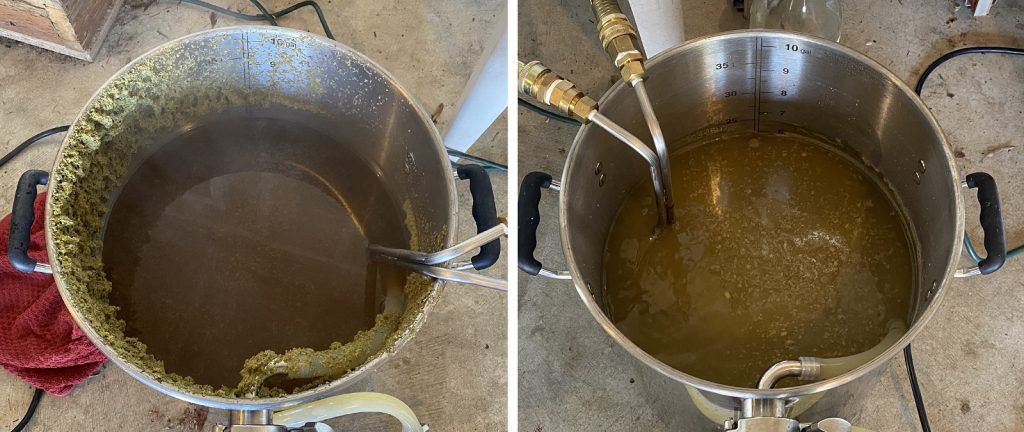
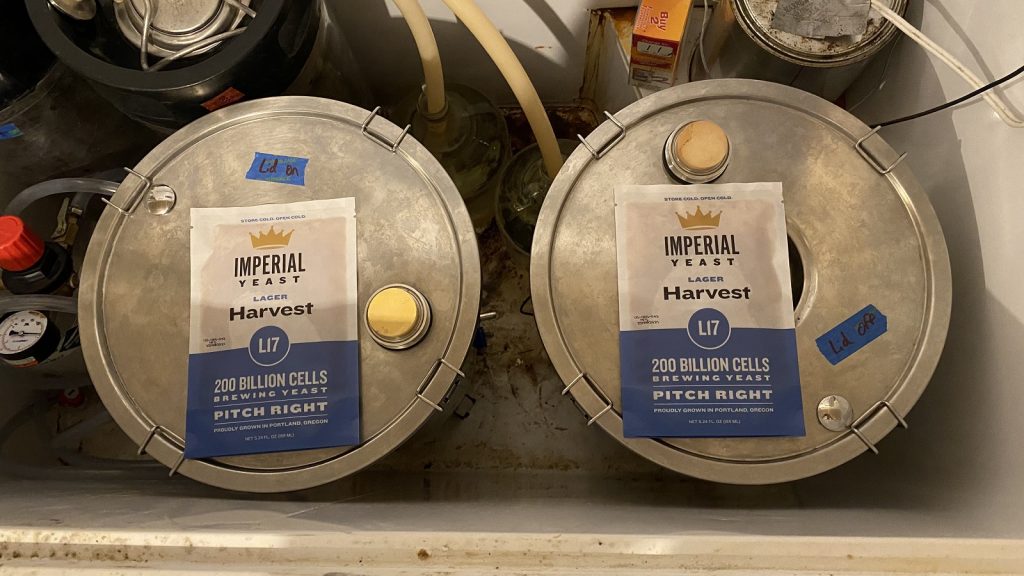











16 thoughts on “exBEERiment | The Boil Effect: Lid On vs Lid Off In A Munich Helles”
Have you considered the fact that there might not be any condensation of DMS?
Consider the following facts. DMS boils at 41° C, and your wort boils at 100° C. You put the lid on. Do you think that your kettle lid will stay at room temperature? No, in due time it will also reach a very high temperature, near the boiling point of water.
Which means that no DMS can condense, and it will equally be blown out of the kettle together with the steam of the boil.
I think there’s something to this comment. The only times I’ve made beers with DMS character was when I had a hard time chilling down for one reason or another. So I’ve had to let the wort cool naturally from 110F or so to RT. Doesn’t explain how the Aussies chill in those cubitainers from boiling and don’t get DMS, but still.
Yeah! That’s sort of what I was getting at with the loose-fitting lid comment. For me, the question is less about whether DMS is being volatilized, but more about how much DMS is making it back into the kettle, if any at all.
It doesn’t even have to be loose fitting, it can fit the kettle, and it can be closed. The energy which you put in the wort will be transformed into steam the same way. It will escape more vigorous, because the flow rate will increase due to a smaller passage. Or the lid will dance on top of your kettle.
you could just turn your controller down to keep from boiling over or use antifoam. I use a steam condenser on my electric setup and can maintain a boil at about 1/3 of the juice it takes with the lid off.
I am surprised that you couldn’t tell the difference – not due to DMS which is not prevalent with modern malts, but because leaving the lid on creates a “boil over,” as evidenced by the hops and trub stuck to the sides of the vessel, and reduces the amount by which wort volume is reduced.
To save electricity, I have always boiled in a plastic bin with lid on, and have never detected any DMS problems.There is a small air vent in the plastic lid but I made another bigger hole to allow me to add hops, which I can cover over loosely with a smaller lid which also has a small vent. The steam and volatile compounds are able to escape easily enough but less heat is wasted.
Am I on crack or did you say you’re boiling in plastic? How does that work?
I too use 120VAC for 4 gallon boils and leave the lid half-on to help with boil vigor
I suppose this takes us a full circle…
As some have posted above, they leave the lid on to help boil vigour, but the boil vs no boil IPA performed here only a few experiments ago show little perceivable flavour difference and that was boiling vs none at all.
The notion that because the boil looks more vigorous something more is happening appears not to hold. Putting the lid partially on to increase boil vigour won’t boil off more so long as your able to hit boiling temps regardless (it may actually boil off less due to increased condensation and increased partial pressure). Your best bet is to insulate the sides and bottom with a blanket
So the takeaway is don’t try to correct a poor boil, just go with it or boil longer if higher gravity is what your trying to achieve. The only real difference we can show (here at least) is a longer heavier boil may darken the wort, denature more proteins, but flavour wise it seems to be below the detectable limit for most homebrewers.
Only on a macro brewer scale might there be a perceivable difference due to the much higher volume to SA
I’ve often wondered if it would be sufficient to leave the lid off for a short time (10-15 minutes) to allow volatilised compounds to blow off. It seems like even this might be unnecessary.
there are a heck of a lot of things like that… that matter massively on the commercial scale but at us homebrew levels… really not so much.
I’ve slowly become shorter and shoddier and my beers haven’t suffered one bit.
I wonder how long it takes to get rid of the dms, does taking the lid off to add hops and put the wort chiller in give enough time? Pro brewers have a sealed top with a chimney but they have a good sized door to make hop additions. I’d be interested to see the same experiment but put the hops in the kettle and the wort transfered to the boil kettle and use a counter flow chiller so the lid never needs to be removed.
How did you get equal volumes of wort? I would have figured the kettle with the lid on would have less boil off and thus have a lower OG.
I have a question about your brew buckets.
I can see the standard hole is closed with a stopper and then there seems to be some kind of plug sitting next to the yeast pouches. I assume the hole for the plugs is covered by the pouches.
Can I ask what the setup there is? How do you attach the blow off?
Thanks.
But the biggest question, how was the beer? Did you miss the taste of carahell?